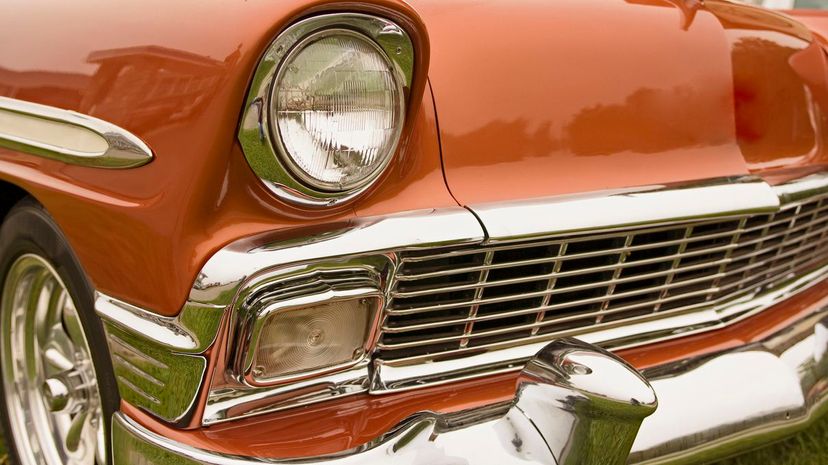
About This Quiz
It’s hard to imagine these days, but in February 1942, the United States ended all consumer automobile production. The factories that had, just weeks earlier, been cranking out sedans and convertibles were quickly converted to wartime makers of tanks, airplanes, jeeps, bombs and firearms. Once the Allies won World War II in 1945, car companies retooled again, reinventing their vehicles to satisfy Americans’ new tastes and booming wealth. This quiz is where the rubber meets the road — how much do you really know about the cars of the 1950s?
It’s been the better part of a century since the '50s and, back then, cars were very different creatures. They were mostly big, heavy, gas-guzzling contraptions loaded with chrome and wild fixtures like broad tails, big lights and aggressive lines that still seemed futuristic in many ways. Do you remember the flashiest and most expensive cars of this decade? Ford and Chevy competed to become America’s top manufacturer. Cadillac fussed over high-end details. The Chrysler New Yorker and Buick Super were fantastic cars. And nearly forgotten brands like Edsel and Studebaker were still on the road, their fates unwritten.
Try not to crash and burn as you veer towards the on-ramp of this ‘50s car quiz!
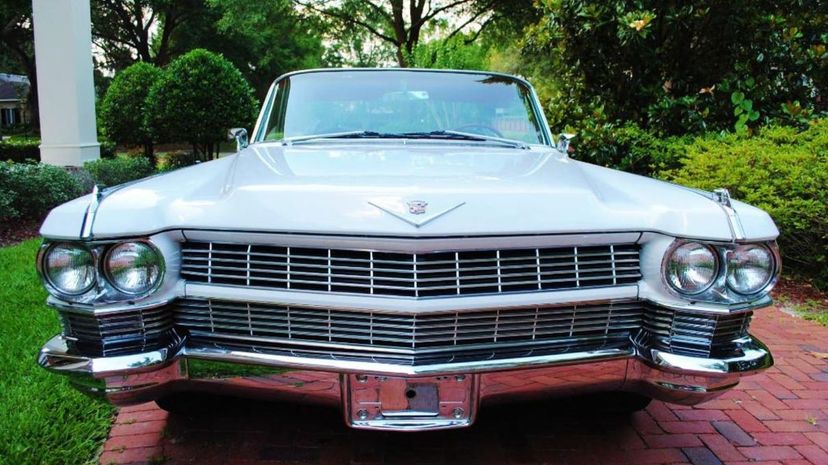
In '52, GM began equipping Cadillac and Oldsmobile models with the Autronic Eye, with other divisions of the company offering it the following year. It had a light-sensing phototube that automatically dimmed the vehicle's high beams in response to oncoming traffic.
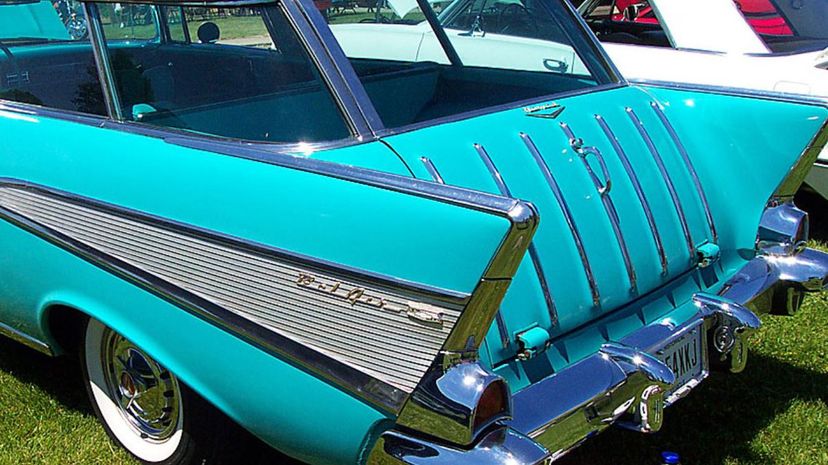
Introduced in 1955, the Chevrolet Nomad was a station wagon produced intermittently from '55 to '72. The best-known version of the big car, the Tri-Five, had just two doors.

In 1956, Chrysler developed the TorqueFlite three-speed automatic transmission, phasing out its two-speed PowerFlite transmission. It soon began equipping some of its cars — like the big New Yorker — with TorqueFlite. That particular car also boasted a massive 325 hp engine.
Advertisement
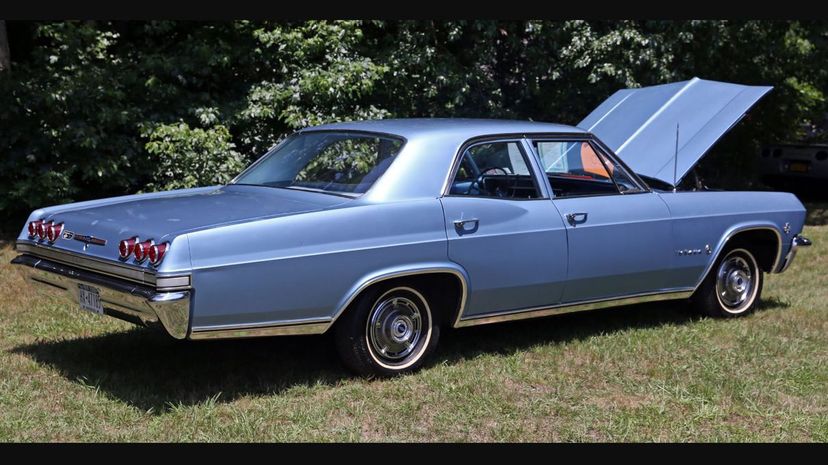
Designed by GM, Powerglide, a two-speed automatic transmission, was introduced in higher-end Chevrolet models in 1950. It was quickly added to other models and by mid-decade more than half of all new Chevrolets sold offered Powerglide. The Powerglide was the industry's first affordable automatic transmission for consumer cars.
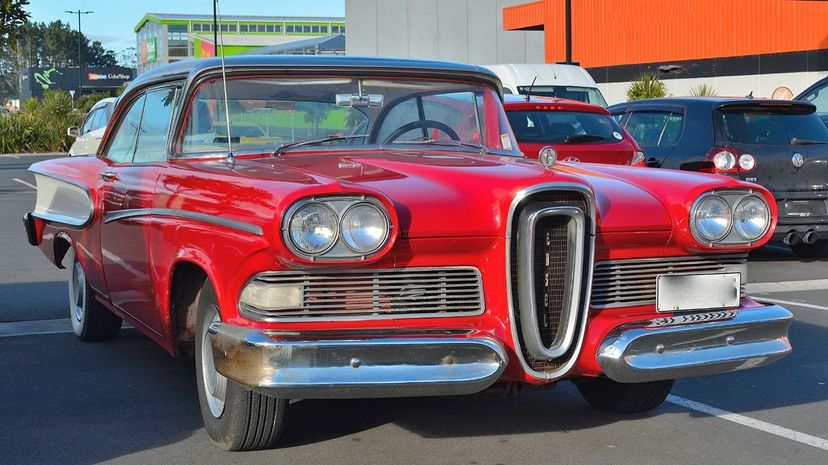
Ford's Edsel sold its Pacer in 1958 … and only 1958. All of the Edsels were total flops, and the Pacer was no exception, even when equipped with a big V8 engine that generated more than 300 hp.
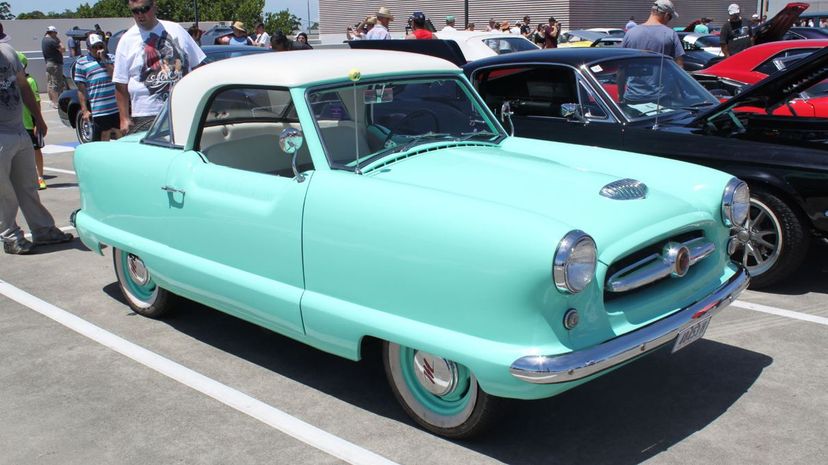
At a time when cars seemed to get bigger and bigger each year, the Nash Metropolitan was a contrarian. Designed as "the family's second vehicle," the "economy" car was made from '53 to '61.
Advertisement
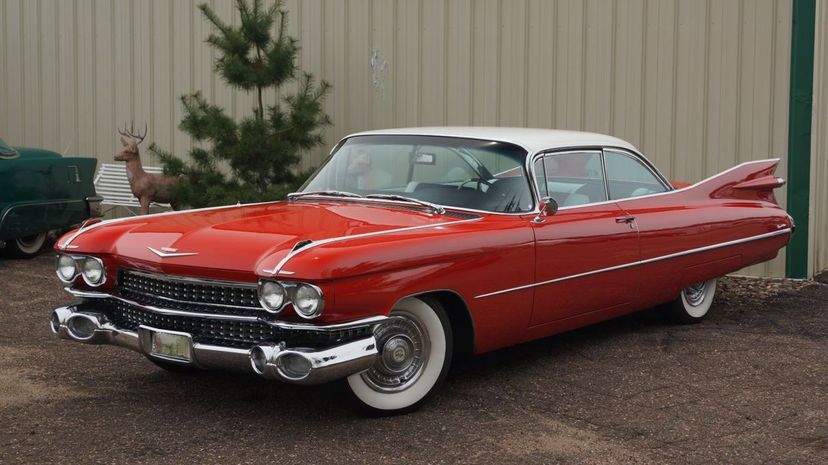
The 1959 Cadillac Coupe de Ville had crazy-huge tailfins. The fins had big, protruding bullet taillights for a racy effect, giving this car a truly iconic look that the '61 redesign toned down quite a bit.
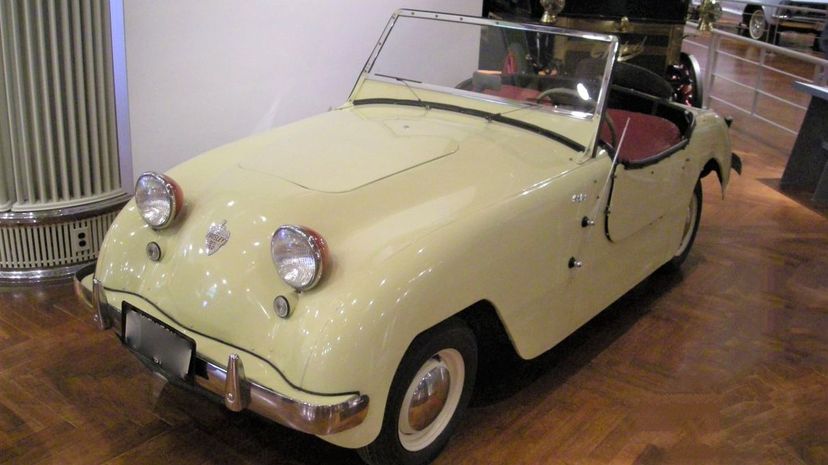
Based in Ohio, Crosley started making subcompact cars in the late 1930s, and maintained production until the early '50s. Some of the cars were so small they could be mistaken for golf carts.
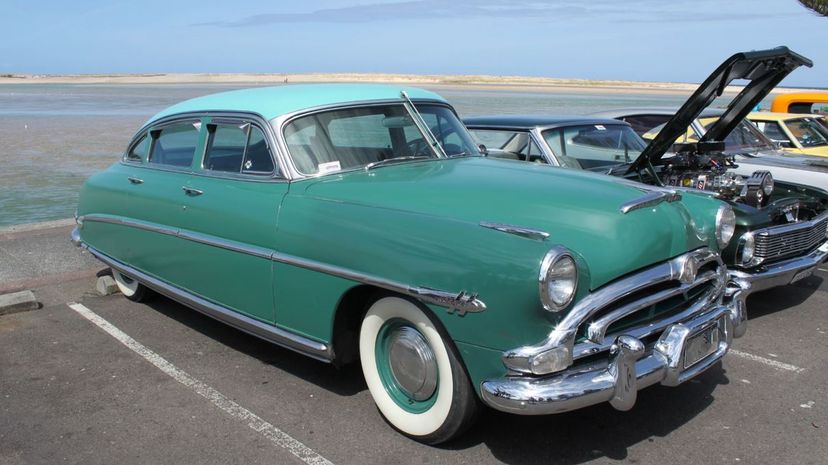
In the 1950s, the Fabulous Hudson Hornet was known for its low center of gravity, which made it very good for racing. This car is one of the greats to come out of Detroit, Michigan.
Advertisement
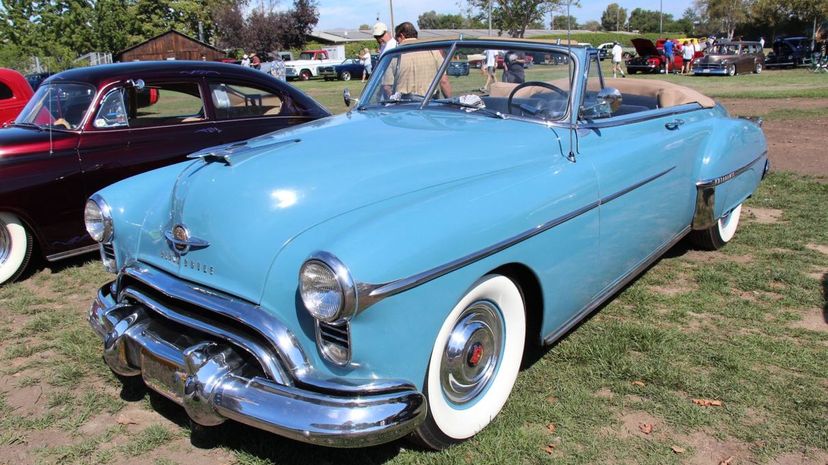
The Oldsmobile 98 is still one of the mid-20th century's best-known cars. One of the brand's most important models, the 98 was a top-of-the-line car with all the trimmings.
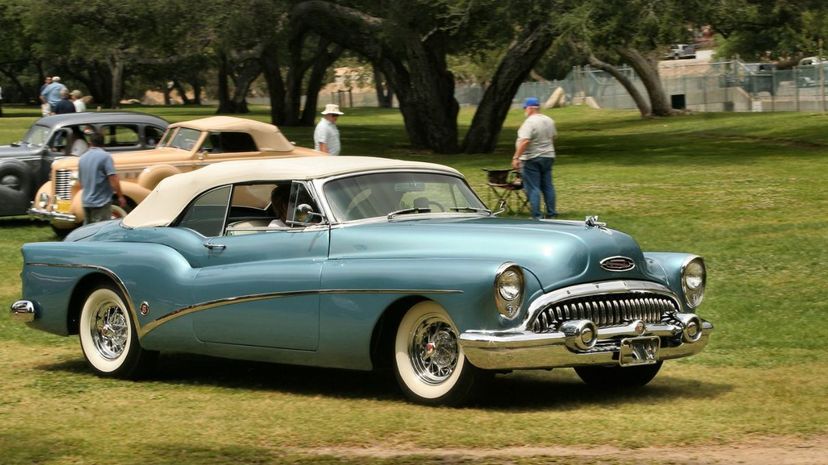
The Buick Roadmaster Skylark of the '50s was no ordinary Buick — it was a decked-out convertible. It had a Nailhead V8 engine and came fully loaded … a fact reflected by its very high price.
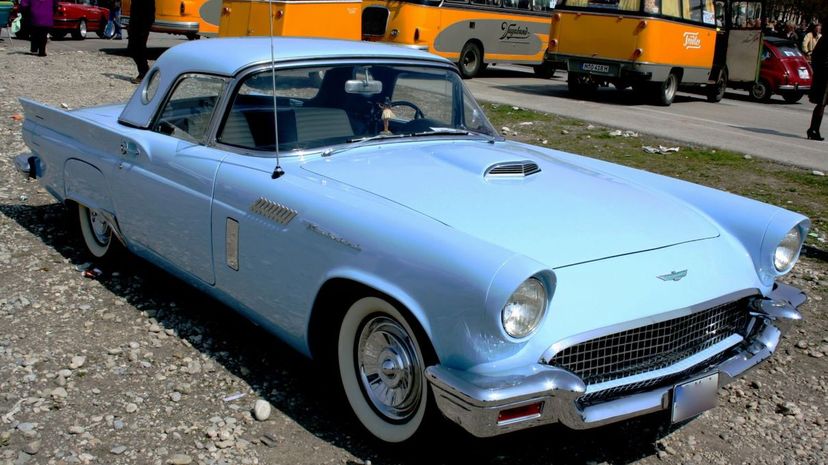
Ford scored a hit with its big Thunderbird. Although it was originally designed to compete against the Chevrolet Corvette, a rear seat was added as part of the vehicle's second generation redesign in 1958 and it was marketed as a "personal luxury car," rather than a "sports car," and sales skyrocketed.
Advertisement
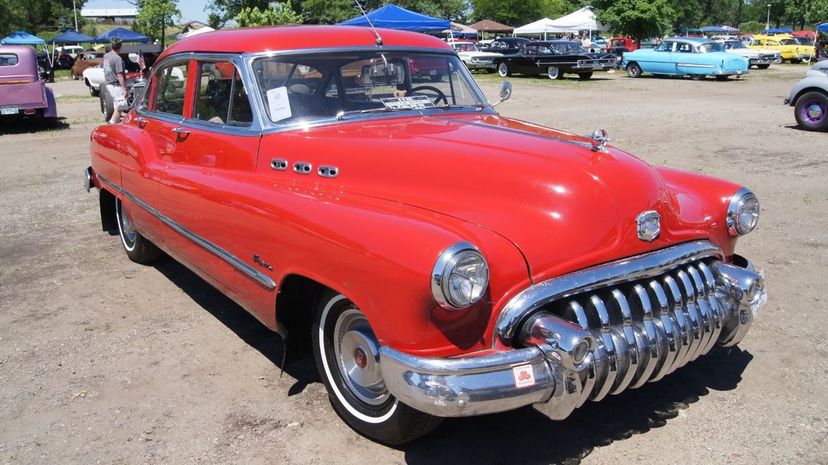
From 1940 to 1958 (except during the WWII), the Buick Super was popular on America's highways. Unlike the angular designs that many cars of the day had, the Super was curvier, sometimes with a slanted backside that made it look faster.
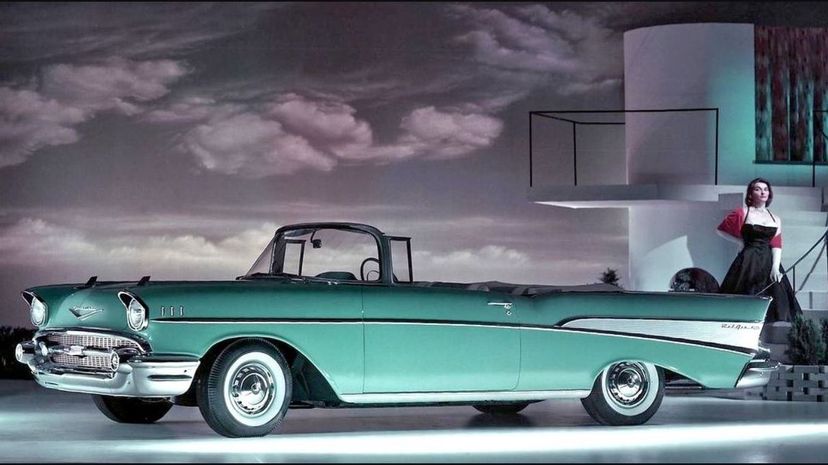
In 1957, Chevy unleashed what became one of its most iconic models — the '57 Chevy. It is easily one of the most recognizable cars of the 20th century, featured in movies, commercials and a whole lot more.
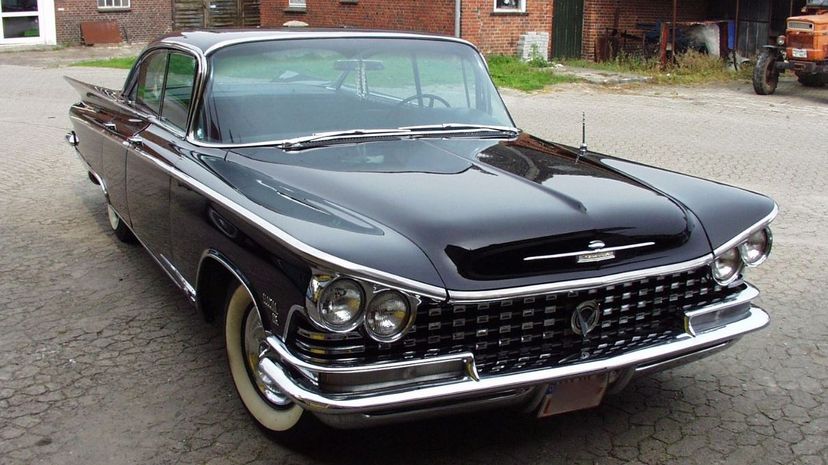
When it debuted in '59, the Buick Electra had funky rear "Delta-Fins" at a 45-degree angle. When paired with its recessed tail lights, it looked a lot like a very angry metal giant from behind.
Advertisement

The BMW 507, made from '56 to '59, was a snappy roadster. Built in Germany, it was originally intended to be exported to the U.S. It turned out to be a horribly expensive project however — one that BMW ended after making fewer than 300 cars.
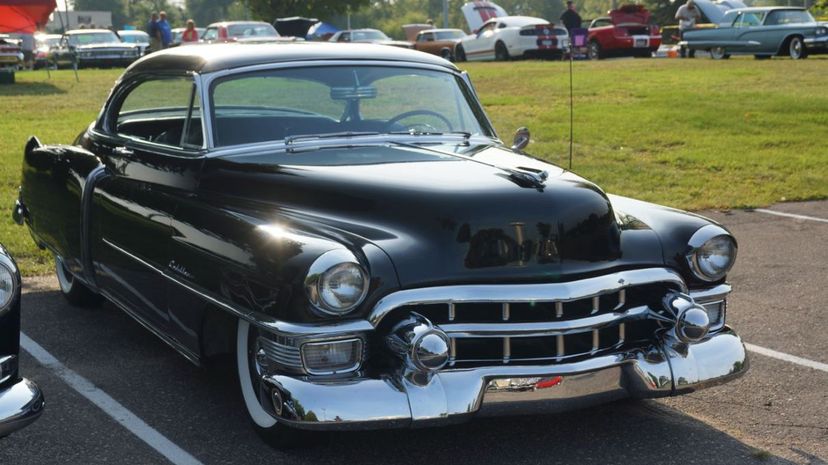
Cadillac made its luxurious Series 62 from 1940 until 1964. Mid-'50s versions got noticeably sleeker and lower, and they had prominent window reveal molding. The Series 62 reached its peak in 1956, accounting for more than 86% of all Cadillacs sold.
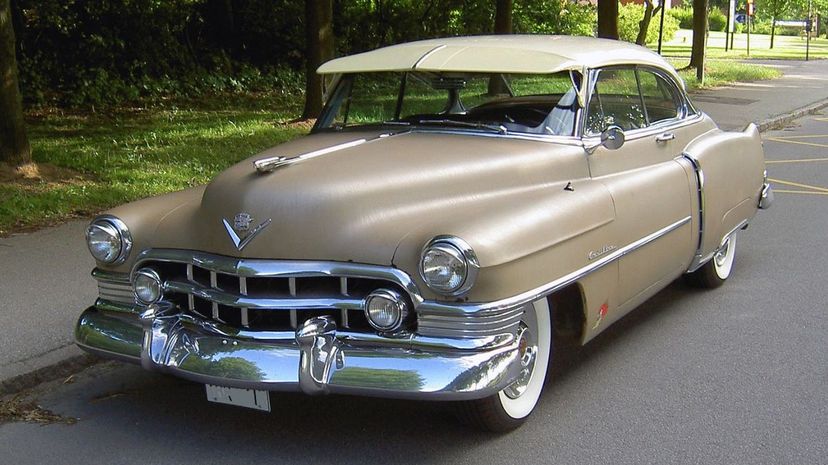
Originally a trim level for the 1949 Cadillac Series 62, the Coupe de Ville — and its 1956 sister series, the Sedan de Ville — were made a separate series in 1959. The final Coupe de Villes rolled off the assembly lines in the 1993 model year, and the last DeVille hit the streets in 2005, replaced by the Cadillac DTS.
Advertisement
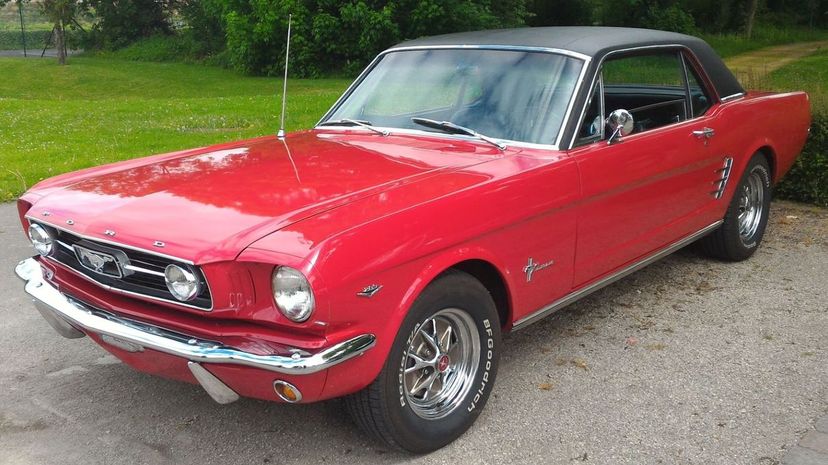
The Mustang helped spark the muscle car revolution of the 1960s. The first generation didn't roll off production lines until 1964.
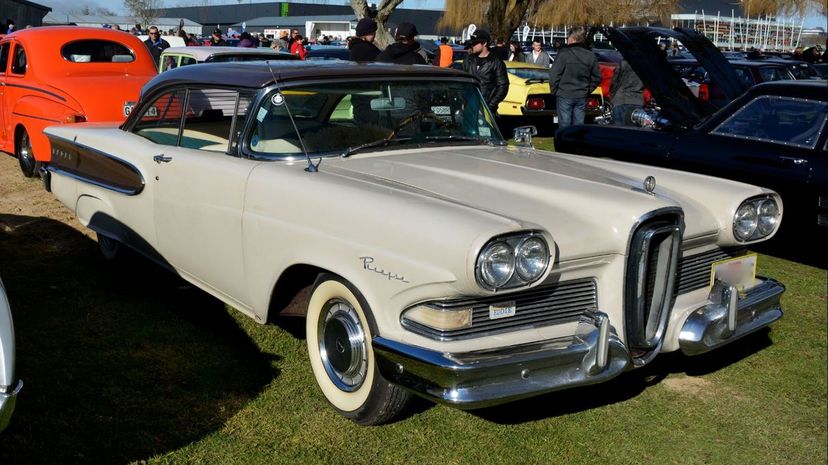
Named for Henry Ford's son, Ford began making Edsel-branded cars for the 1958 model year. The cars' strange styling immediately turned off reviewers and the disastrous marketing of the line is widely regarded as how NOT to market a product. Edsel wound up costing the company an estimated $250 million dollars (nearly $2 billion adjusted to today's dollars) with some estimates rising as high at $400 million.
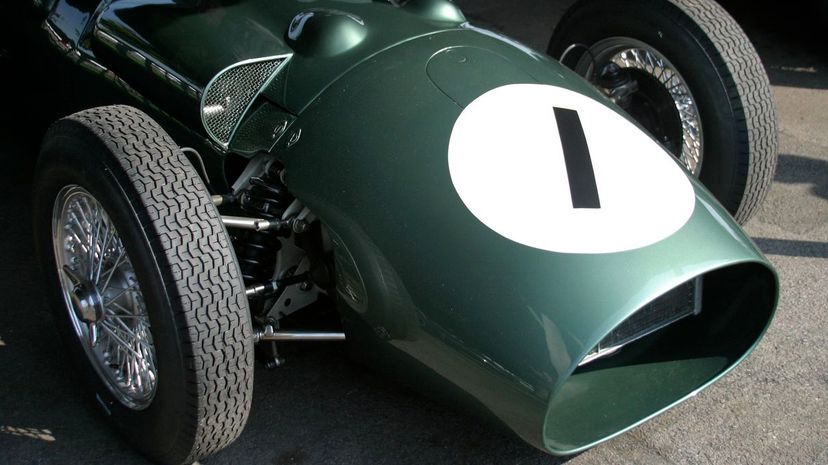
In 1955, Chevy began offering its now-legendary small-block V8 engine, the Turbo Fire V8. Two years later, the high-performance version of this V8 was released. The 283, aka the "Super Turbo Fire V8," was a favorite of hot rodders.
Advertisement
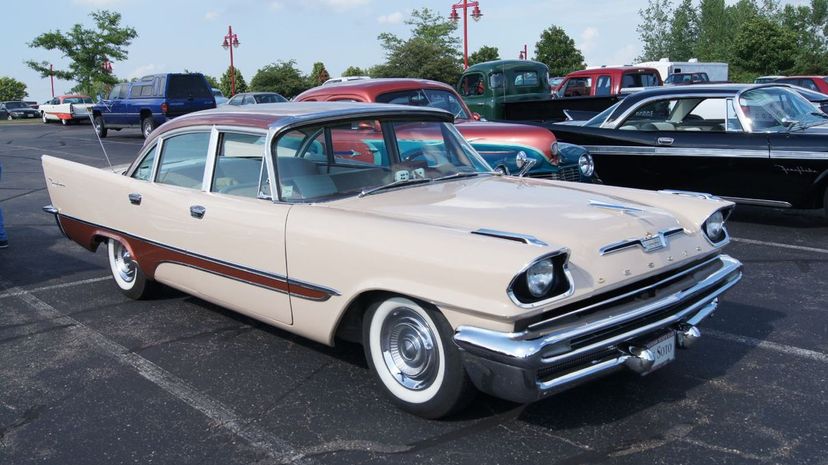
From 1929 to 1961, Chrysler made its popular DeSoto cars, including the Firedome, Fireflite and Firesweep models. DeSoto cars were eventually discontinued when Chrysler faced financial troubles in the '60s thanks to the 1958 recession and a weakened network of Chrysler dealer networks.
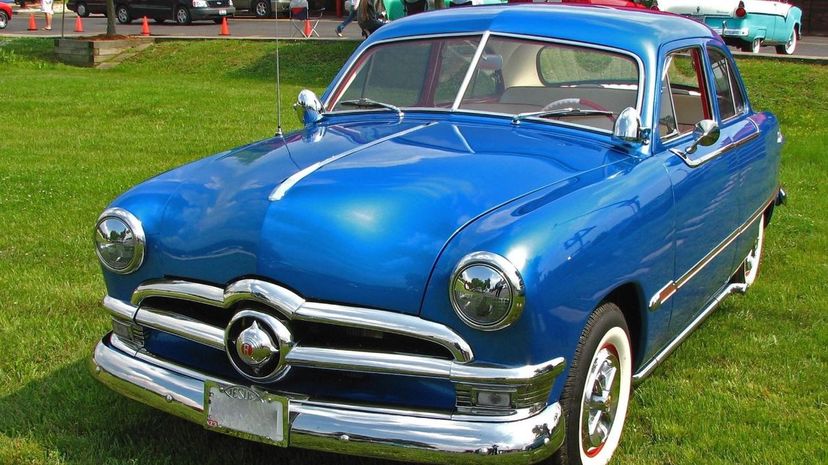
Chevrolet sold over 13 million vehicles during the 1950s, beating out Ford by more than 1 million cars sold. With no where near this number of units sold, third place belongs to Plymouth with over 5.5 million vehicles sold in the fifties.
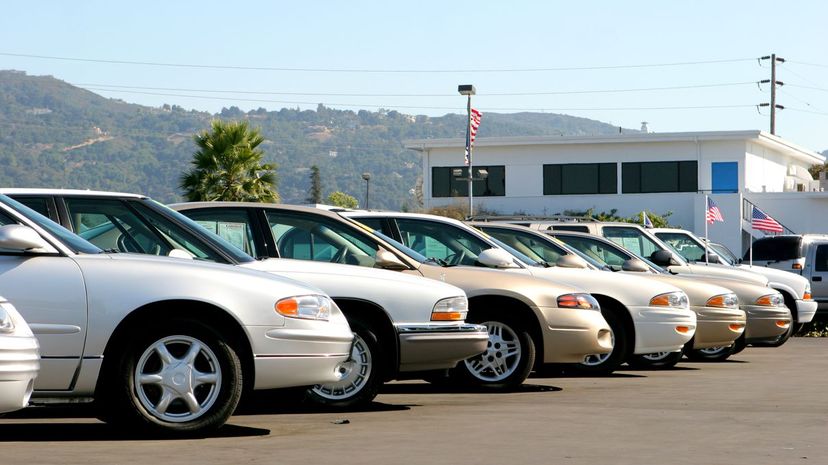
In the 1950s, Chevy was tops in sales with more than 13 million cars sold, winning the auto boom race. Ford was nearly neck-and-neck with Chevy, with almost 12.3 million sold. Plymouth came in third with 5.6 million. Buick (4.8 million) and Oldsmobile (3.7 million) rounded out the top five.
Advertisement
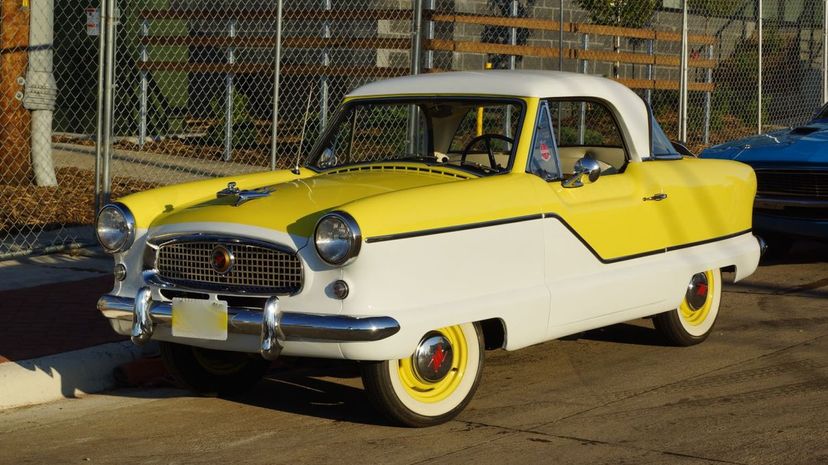
The Series III featured an elegant chrome woman — the "Flying Lady" — as its hood ornament. It was easily one of the flashiest hood ornaments of the decade.
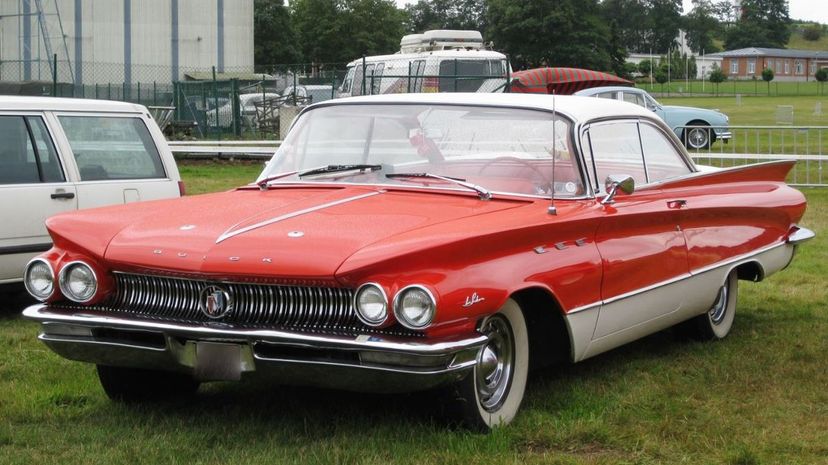
While there was a concept car with the same name made by General Motors in 1951, the first generation of the Buick LeSabre was introduced in 1959. It underwent major restyling the next year, and the next generation of this full-size car was again revamped and rolled out in 1961. The line lasted until the end of its eighth generation in 2005.
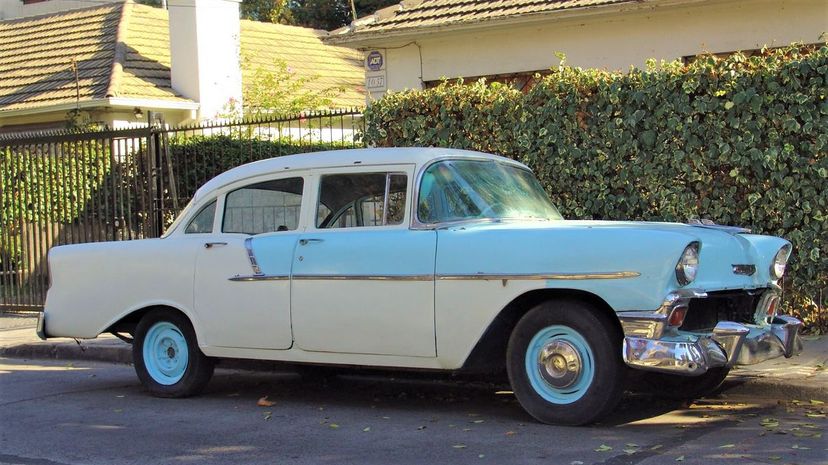
In the mid-'50s, the Chevrolet 150 was an economy variant meant for fleets, although it was a popular police car too. Because of this, GM didn't spend much time or money advertising it to the mass market.
Advertisement
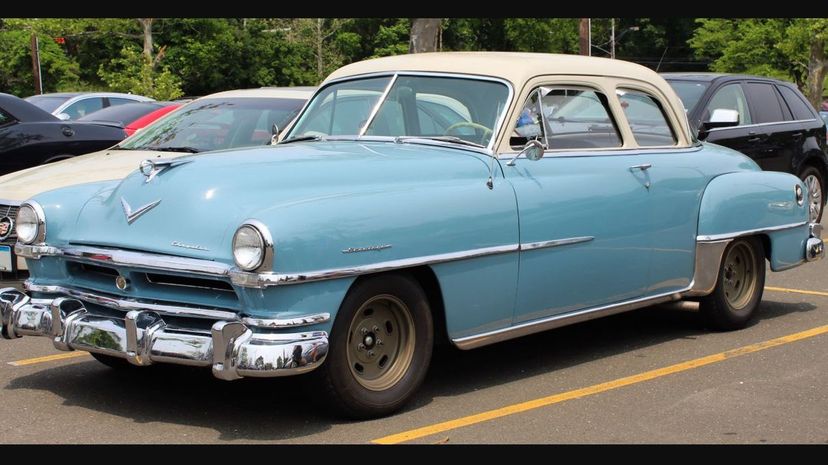
The Chrysler Saratoga line got its start in 1939, and it was made intermittently until 1960 for the U.S. market (1965 in Canada). Late in its run, it was positioned between the company's Windsor and the top-end New Yorker. The line was revived from 1989 through 1995.
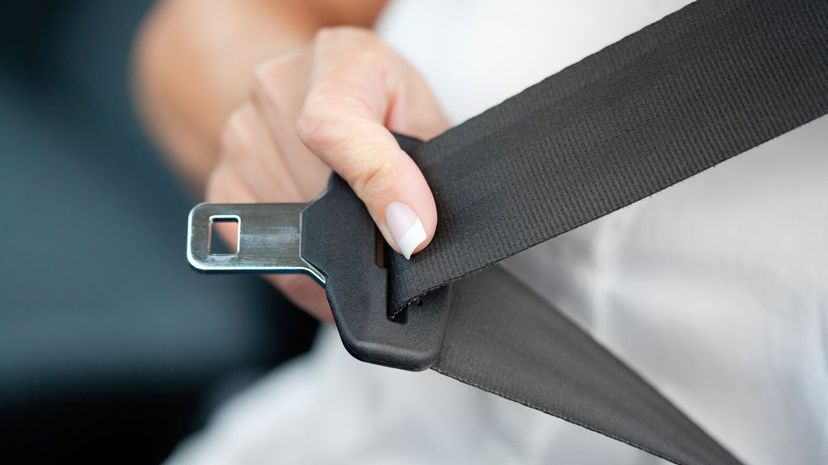
Swedish inventor Nils Bohlin worked for Volvo and came up with the three-point safety belt that we use in vehicles today. This improved belt was introduced to Volvo as standard equipment in 1959, four years after Saab made safety belts standard in 1955.
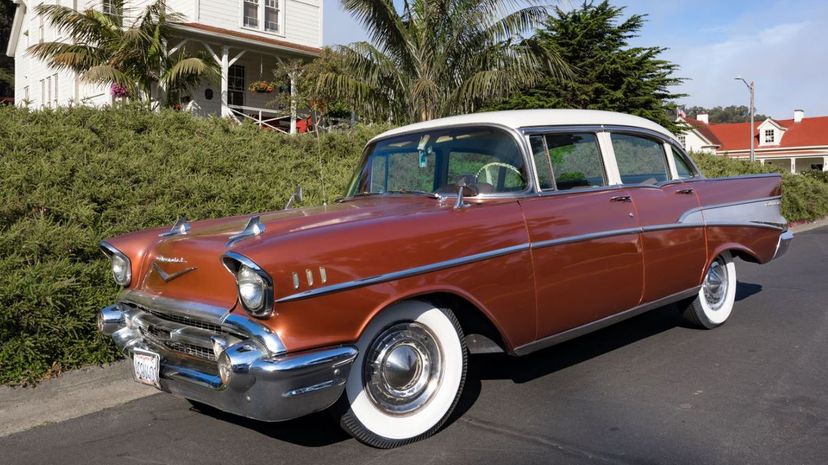
Started in 1950, the first two years of Bel Airs referred to a unique body shape (a two-door hardtop, as opposed to the Styleline and Fleetline models). In 1953, the name was changed to denote a top-of-the-line trim level for many body styles. Premium Bel Air models were equipped with all the extras, loaded to meet the demands of people who wanted a fancy Chevy.
Advertisement
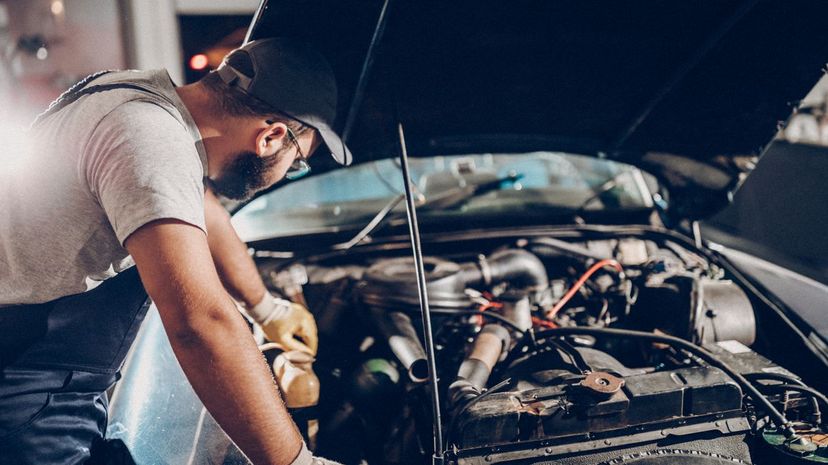
In 1958, Chrysler began cranking out its B and RB big-block engines to replace their FirePower series. These big engines range from 5.7 L versions to 7.2 L monsters.
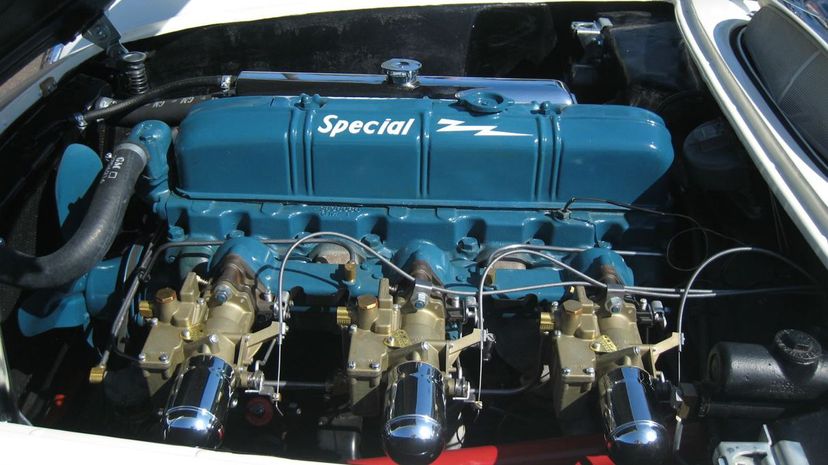
Chevy's Blue Flame Six, an evolution of the Blue Flame straight-6 engine first developed in 1929, was essentially an interim engine — a V6 meant to hold the line while Chevy made a new small-block V8 masterpiece. The Blue Flames wound up in many Corvettes, and the very first ones topped out at 150 hp.

While most cars before the fifties were made from heavy steel, car makers started to look for lighter and less expensive alternatives during the Korean Conflict of 1950-1952. Some manufacturers experimented with wood, aluminum, magnesium, and some fiberglasses, and in 1953 Chevy produced 300 Corvettes with fiber reinforced plastic (FRP) panels as the biggest application of these experiments at the time.
Advertisement
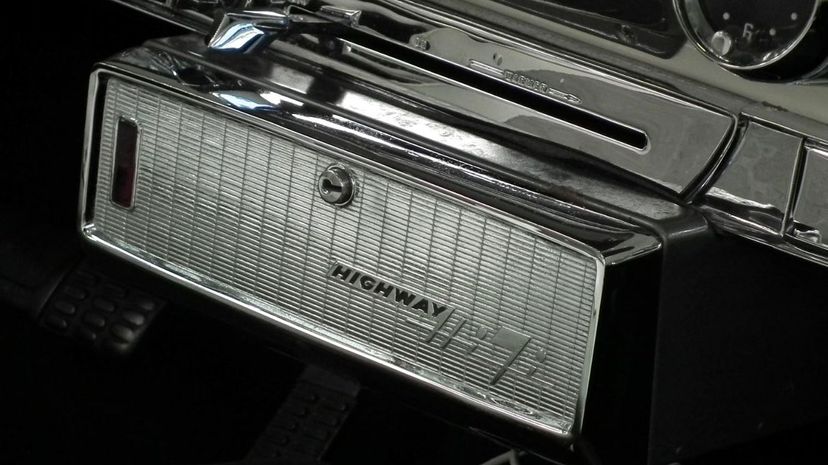
Called the Highway Hi-Fi, Chrysler debuted this in their luxury cars just one year before having transistor radios as an option in their vehicles. The Highway Hi-Fi was not a popular source of entertainment, and it was quickly discontinued.
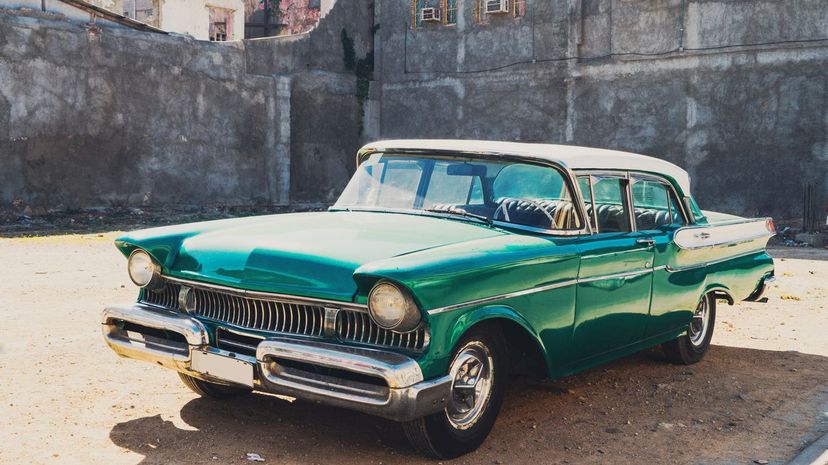
Surprisingly, the '50s did not see steady growth for manufacturing vehicles. The peak of manufacturing hit in 1955 with over 9.6 million cars made in America, but declined to a low of less than 6 million made in 1958.